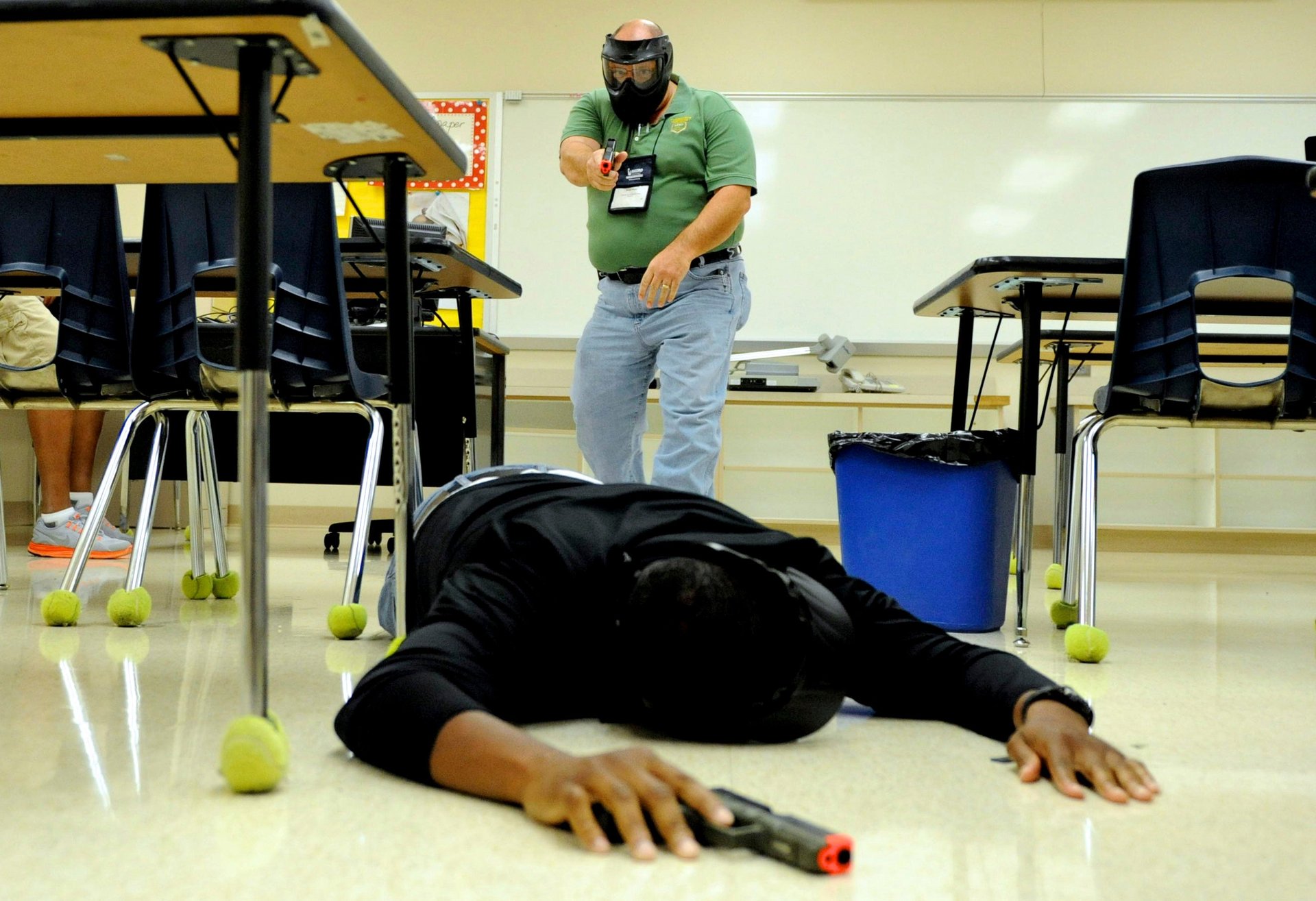Ohio State tells students to “run, hide, fight” in the face of an active shooter
At least nine people have been taken to hospital during an active shooter situation on the campus of the Ohio State University in Columbus on Monday (Nov. 28) morning, according to local law enforcement officials.


At least nine people have been taken to hospital during an active shooter situation on the campus of the Ohio State University in Columbus on Monday (Nov. 28) morning, according to local law enforcement officials.
The university’s emergency management and fire prevention department tweeted out an alert at 9:56 am notifying those on campus of the situation and urging them to “run, hide, fight.” Shortly after the initial alert, emergency management texted and tweeted additional notifications advising those on campus to “shelter in place.”
“Run, hide, fight” is a safety protocol for active shooter situations promoted by the Department of Homeland Security (pdf) and other law enforcement agencies. It offers a plan of action for those who find themselves in the midst of a mass shooting: Your first defense should be to evacuate if possible. If not, the next course of action is to find a safe place to hide and stay out of view in silence. As a last resort “and only when your life is in imminent danger,” says DHS, you should take steps to incapacitate the shooter and “act with physical aggression.”
A guide to “run, hide, fight” published by the Washington Post offers more specific guidance. In it, experts suggest pausing to scan the area in order to determine the best escape route, instead of simply following the crowd. If an exit is unavailable, your next step should be to hide. The guide suggests barricading and blocking doors or other entrances that might allow a shooter entry into your area. Cell phones should be silenced and lights should be turned off.
In the case of having to fight as a last resort, the Washington Post guide advises turning “the element of surprise against the shooter.” Tactics might include creating chaos by throwing items at the shooter; swarming the shooter by grabbing his arms, legs and torso; moving the weapon away; and, as absolute last resource, attacking the shooter by aiming for vital areas like the head or throat.
Critics of the ”run, hide, fight” model say that it doesn’t address the human response of freezing in the face of danger and that the suggestions to run and hide create a “victim mindset.” Some argue that a better model would be to suggest that all three options are equally viable, and not to present them as a step-by-step process.
Joseph LeDoux, a professor of science at New York University, suggests that the way to mitigate the human freeze response is to encourage people to cognitively reappraise a situation in the moment, which can enable them to employ a “run, hide, fight” response.
“Perhaps we could harness the power of social media to conduct a kind of collective cultural training in which we learn to reappraise the freezing that occurs in dangerous situations,” LeDoux wrote in the New York Times. “In most of us, freezing will occur no matter what. It’s just a matter of how long it will last.”